Paula Delgado-Santos
Exploring Transformers for On-Line Handwritten Signature Verification
Jul 06, 2023


Abstract:The application of mobile biometrics as a user-friendly authentication method has increased in the last years. Recent studies have proposed novel behavioral biometric recognition systems based on Transformers, which currently outperform the state of the art in several application scenarios. On-line handwritten signature verification aims to verify the identity of subjects, based on their biometric signatures acquired using electronic devices such as tablets or smartphones. This paper investigates the suitability of architectures based on recent Transformers for on-line signature verification. In particular, four different configurations are studied, two of them rely on the Vanilla Transformer encoder, and the two others have been successfully applied to the tasks of gait and activity recognition. We evaluate the four proposed configurations according to the experimental protocol proposed in the SVC-onGoing competition. The results obtained in our experiments are promising, and promote the use of Transformers for on-line signature verification.
TypeFormer: Transformers for Mobile Keystroke Biometrics
Dec 26, 2022



Abstract:The broad usage of mobile devices nowadays, the sensitiveness of the information contained in them, and the shortcomings of current mobile user authentication methods are calling for novel, secure, and unobtrusive solutions to verify the users' identity. In this article, we propose TypeFormer, a novel Transformer architecture to model free-text keystroke dynamics performed on mobile devices for the purpose of user authentication. The proposed model consists in Temporal and Channel Modules enclosing two Long Short-Term Memory (LSTM) recurrent layers, Gaussian Range Encoding (GRE), a multi-head Self-Attention mechanism, and a Block-Recurrent structure. Experimenting on one of the largest public databases to date, the Aalto mobile keystroke database, TypeFormer outperforms current state-of-the-art systems achieving Equal Error Rate (EER) values of 3.25% using only 5 enrolment sessions of 50 keystrokes each. In such way, we contribute to reducing the traditional performance gap of the challenging mobile free-text scenario with respect to its desktop and fixed-text counterparts. Additionally, we analyse the behaviour of the model with different experimental configurations such as the length of the keystroke sequences and the amount of enrolment sessions, showing margin for improvement with more enrolment data. Finally, a cross-database evaluation is carried out, demonstrating the robustness of the features extracted by TypeFormer in comparison with existing approaches.
Mobile Keystroke Biometrics Using Transformers
Jul 15, 2022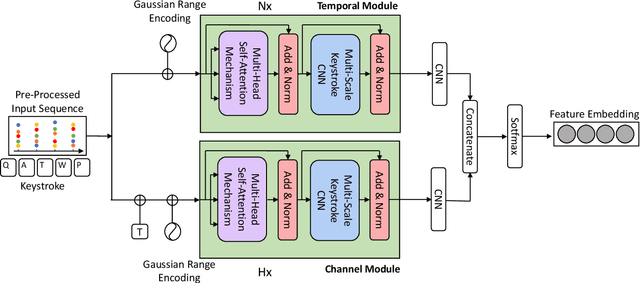
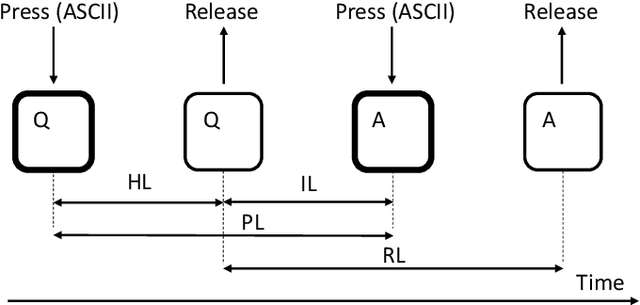
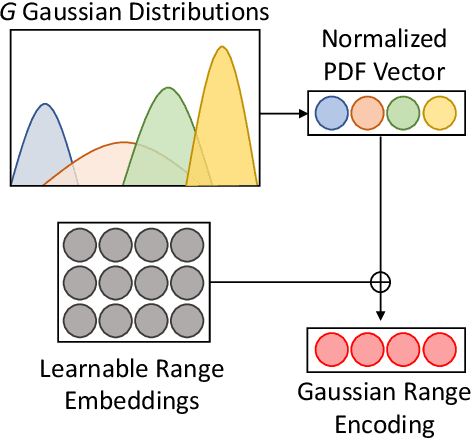

Abstract:Behavioural biometrics have proven to be effective against identity theft as well as be considered user-friendly authentication methods. One of the most popular traits in the literature is keystroke dynamics due to the large deployment of computers and mobile devices in our society. This paper focuses on improving keystroke biometric systems on the free-text scenario. This scenario is characterised as very challenging due to the uncontrolled text conditions, the influential of the user's emotional and physical state, and the in-use application. To overcome these drawbacks, methods based on deep learning such as Convolutional Neural Networks (CNNs) and Recurrent Neural Networks (RNNs) have been proposed in the literature, outperforming traditional machine learning methods. However, these architectures still have aspects that need to be reviewed and improved. To the best of our knowledge, this is the first study that proposes keystroke biometric systems based on Transformers. The proposed Transformer architecture has achieved Equal Error Rate (EER) values of 3.84% in the popular Aalto mobile keystroke database using only 5 enrolment sessions, outperforming in large margin other state-of-the-art approaches in the literature.
Exploring Transformers for Behavioural Biometrics: A Case Study in Gait Recognition
Jun 03, 2022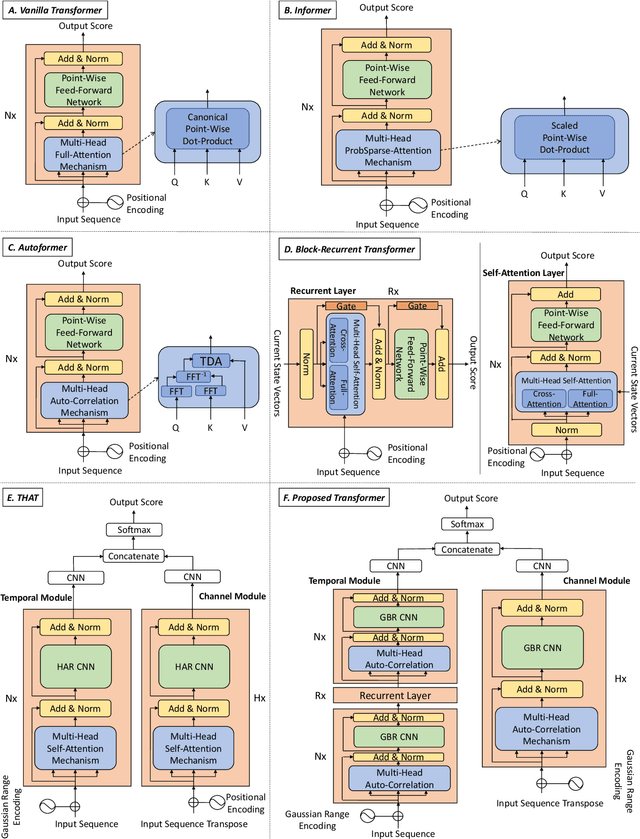
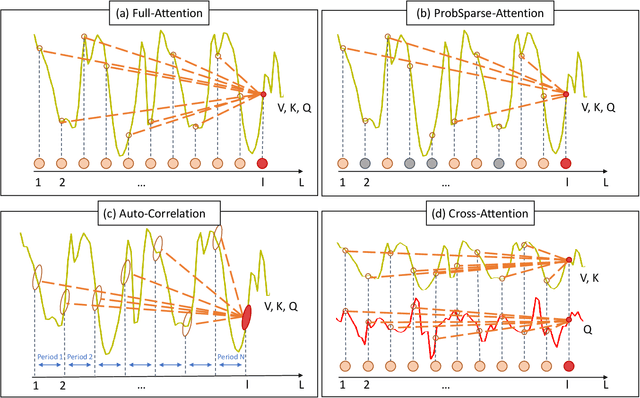
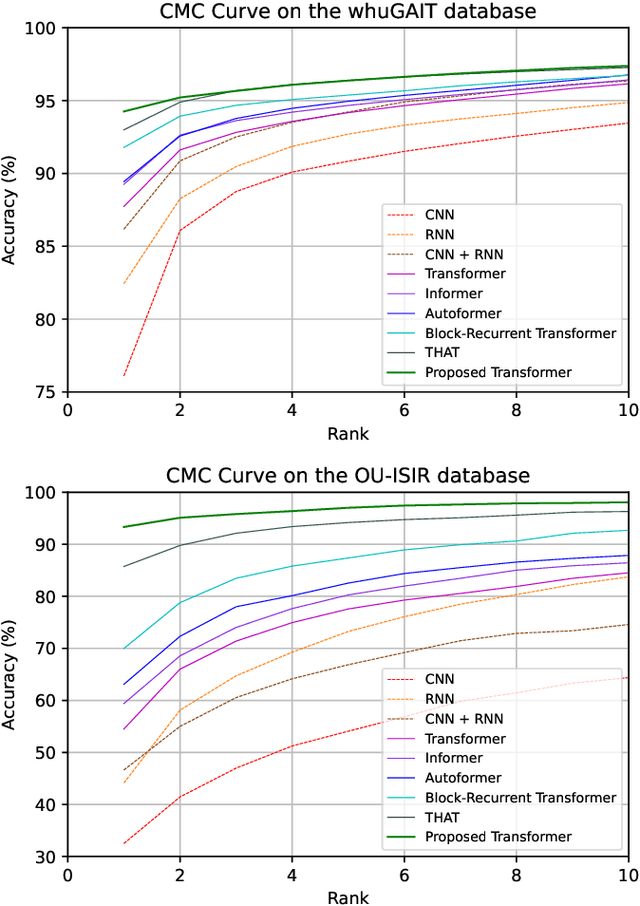
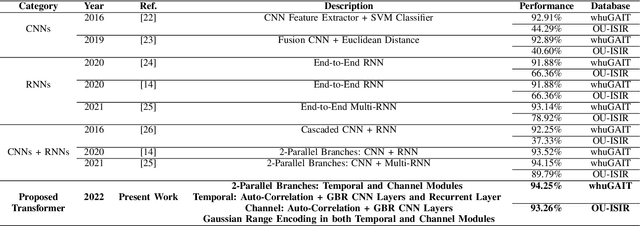
Abstract:Biometrics on mobile devices has attracted a lot of attention in recent years as it is considered a user-friendly authentication method. This interest has also been motivated by the success of Deep Learning (DL). Architectures based on Convolutional Neural Networks (CNNs) and Recurrent Neural Networks (RNNs) have been established to be convenient for the task, improving the performance and robustness in comparison to traditional machine learning techniques. However, some aspects must still be revisited and improved. To the best of our knowledge, this is the first article that intends to explore and propose novel gait biometric recognition systems based on Transformers, which currently obtain state-of-the-art performance in many applications. Several state-of-the-art architectures (Vanilla, Informer, Autoformer, Block-Recurrent Transformer, and THAT) are considered in the experimental framework. In addition, new configurations of the Transformers are proposed to further increase the performance. Experiments are carried out using the two popular public databases whuGAIT and OU-ISIR. The results achieved prove the high ability of the proposed Transformer, outperforming state-of-the-art CNN and RNN architectures.
GaitPrivacyON: Privacy-Preserving Mobile Gait Biometrics using Unsupervised Learning
Oct 08, 2021
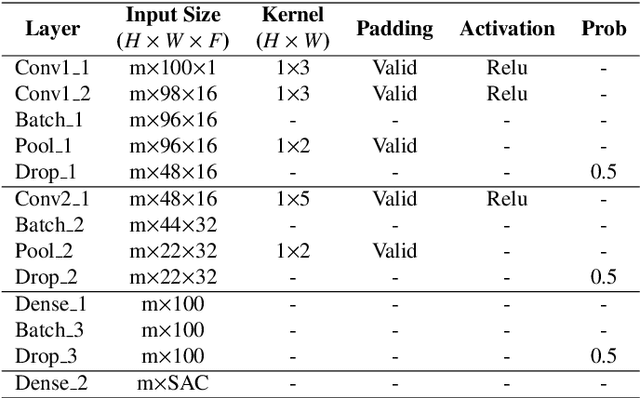
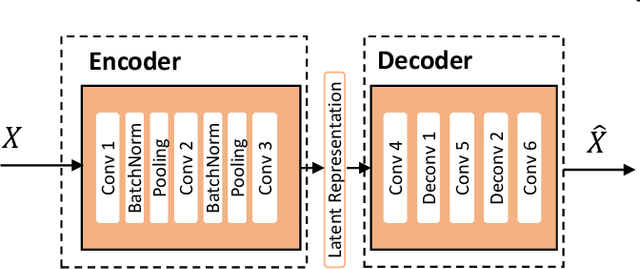
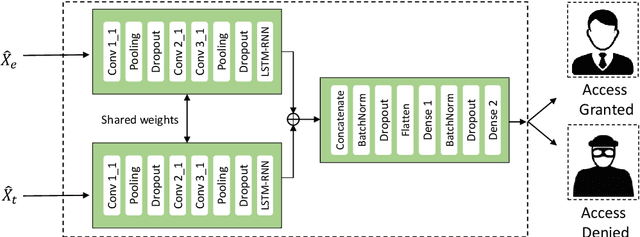
Abstract:Numerous studies in the literature have already shown the potential of biometrics on mobile devices for authentication purposes. However, it has been shown that, the learning processes associated to biometric systems might expose sensitive personal information about the subjects. This study proposes GaitPrivacyON, a novel mobile gait biometrics verification approach that provides accurate authentication results while preserving the sensitive information of the subject. It comprises two modules: i) a convolutional Autoencoder that transforms attributes of the biometric raw data, such as the gender or the activity being performed, into a new privacy-preserving representation; and ii) a mobile gait verification system based on the combination of Convolutional Neural Networks (CNNs) and Recurrent Neural Networks (RNNs) with a Siamese architecture. The main advantage of GaitPrivacyON is that the first module (convolutional Autoencoder) is trained in an unsupervised way, without specifying the sensitive attributes of the subject to protect. The experimental results achieved using two popular databases (MotionSense and MobiAct) suggest the potential of GaitPrivacyON to significantly improve the privacy of the subject while keeping user authentication results higher than 99% Area Under the Curve (AUC). To the best of our knowledge, this is the first mobile gait verification approach that considers privacy-preserving methods trained in an unsupervised way.
DeepWriteSYN: On-Line Handwriting Synthesis via Deep Short-Term Representations
Sep 14, 2020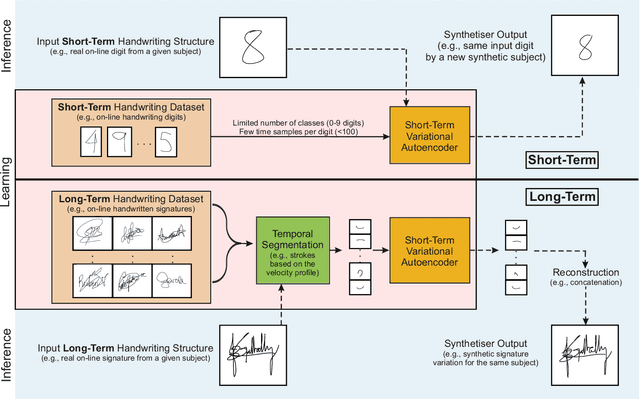
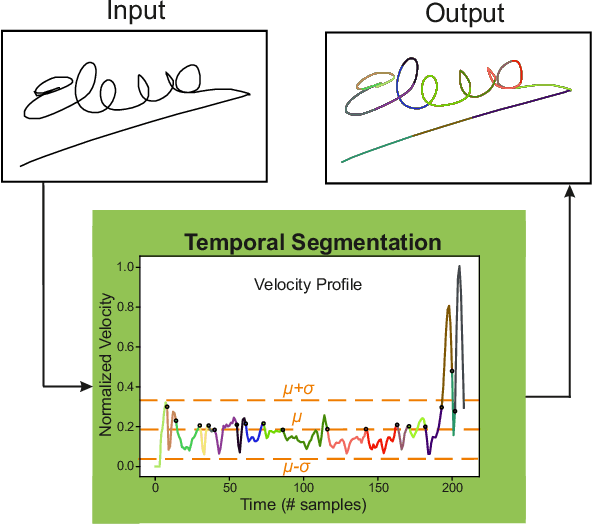
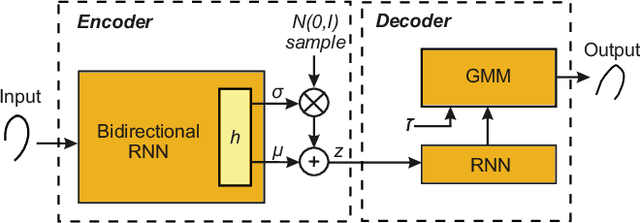
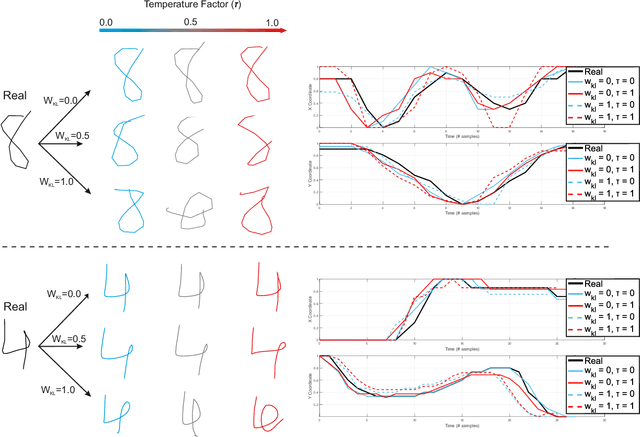
Abstract:This study proposes DeepWriteSYN, a novel on-line handwriting synthesis approach via deep short-term representations. It comprises two modules: i) an optional and interchangeable temporal segmentation, which divides the handwriting into short-time segments consisting of individual or multiple concatenated strokes; and ii) the on-line synthesis of those short-time handwriting segments, which is based on a sequence-to-sequence Variational Autoencoder (VAE). The main advantages of the proposed approach are that the synthesis is carried out in short-time segments (that can run from a character fraction to full characters) and that the VAE can be trained on a configurable handwriting dataset. These two properties give a lot of flexibility to our synthesiser, e.g., as shown in our experiments, DeepWriteSYN can generate realistic handwriting variations of a given handwritten structure corresponding to the natural variation within a given population or a given subject. These two cases are developed experimentally for individual digits and handwriting signatures, respectively, achieving in both cases remarkable results. Also, we provide experimental results for the task of on-line signature verification showing the high potential of DeepWriteSYN to improve significantly one-shot learning scenarios. To the best of our knowledge, this is the first synthesis approach capable of generating realistic on-line handwriting in the short term (including handwritten signatures) via deep learning. This can be very useful as a module toward long-term realistic handwriting generation either completely synthetic or as natural variation of given handwriting samples.
 Add to Chrome
Add to Chrome Add to Firefox
Add to Firefox Add to Edge
Add to Edge